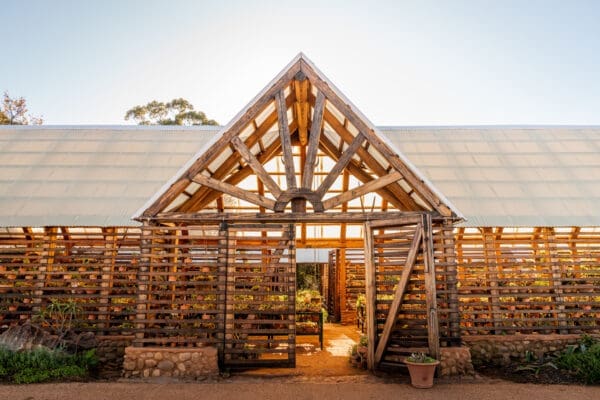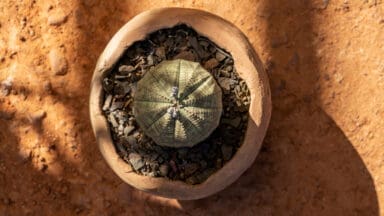
Shaped by suffering, the plants in the South African Karoo are the result of millions of years of adaptation. The constant stress to survive, has led to incredible evolutionary creativity.
In partnership with The Newt in Somerset and its sister estate, the Babylonstoren, some of that ingenious, natural creativity will be on show in the RHS Chelsea Succulent Karoo Garden. The garden, located on the RHS Chelsea’s Triangle, will feature a range of the unusual, captivating plants of the region, set amongst the volcanic rock formations that make up their habitat.
“These beautifully formed plants are appreciated by many, and their water-saving or streamlined life forms serve as an example to humans, teaching us to carefully work with our resources, conserving moisture and energy,” explains Dr. Ernst van Jaarsveld, Master Botanist at Babylonstoren, South Africa.
Working to provide RHS Chelsea visitors with a snapshot of the Karoo, is Katie Lewis, Estate Architect at The Newt in Somerset, the Master botanists Ernst van Jaarsveld and Cornell Beukes from the Babylonstoren, along with a team of experienced gardeners.
“People are often trained to think that succulents are all the same, with little diversity between them. In reality, they are a remarkably diverse group, and the Karoo is home to an incredibly wide range of succulents that are not commonly seen in local garden centres. I’m excited to showcase these species in their raw, natural form not hybridised for colour and form, but celebrating the true beauty of the natural world,” explains Katie Lewis, Estate Architect at The Newt in Somerset – the designer of the garden.
She adds, “The goal is to inspire visitors and highlight the diversity of succulents, showing that they go far beyond the typical varieties we’re familiar with here. Some plants from the Karoo, like certain aloes, have made their way into UK gardens, but the full range of species in their original form is something truly unique. I hope visitors take away a deeper appreciation for the variety and resilience of these plants, as well as a greater understanding of plant ecosystems.”
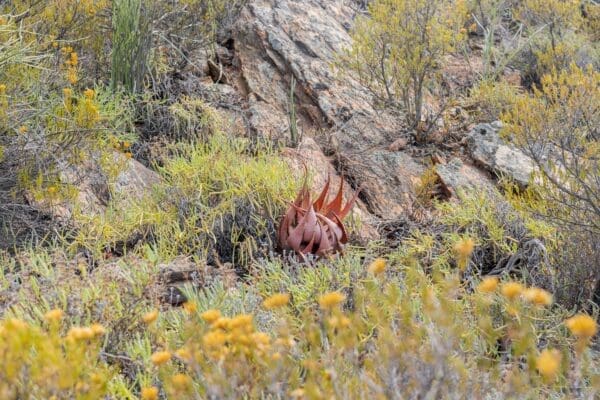

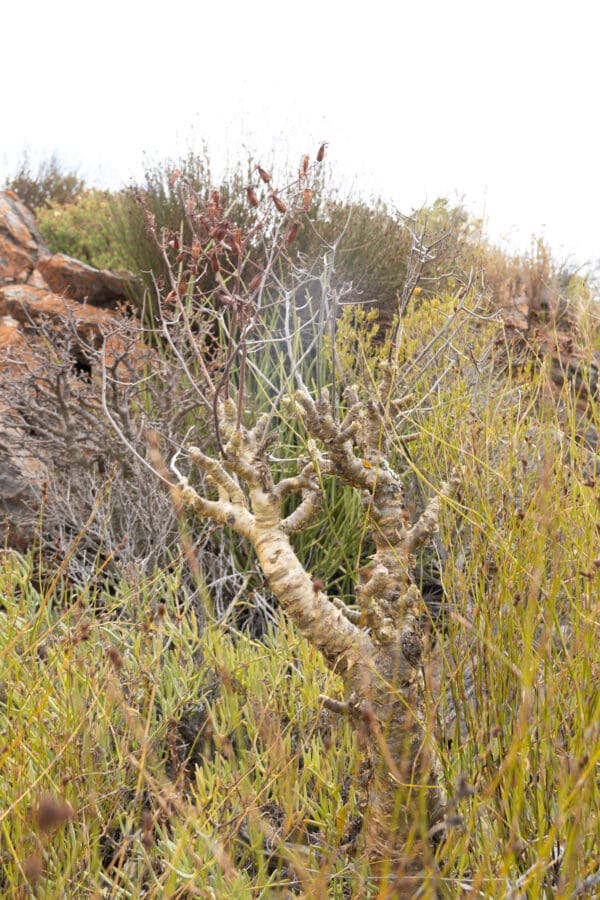
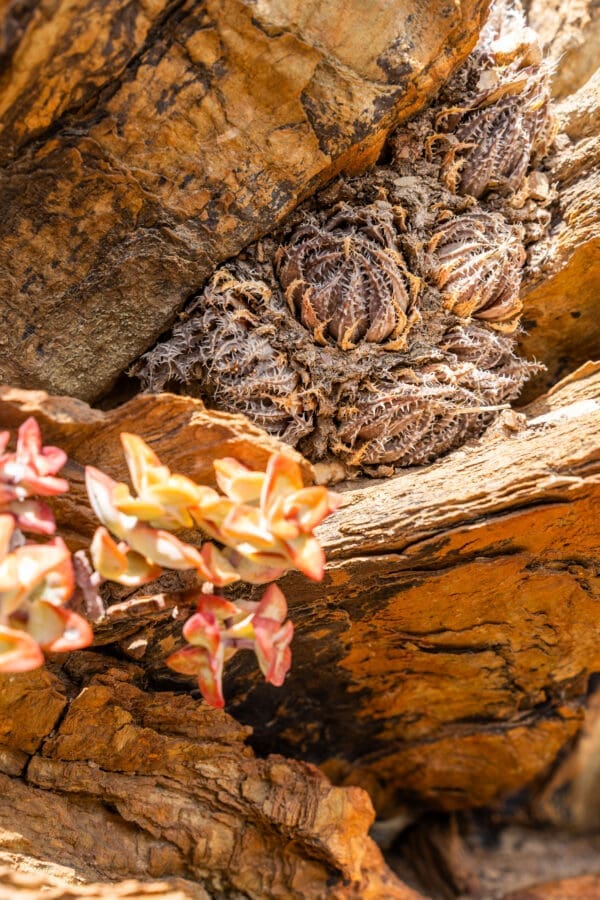
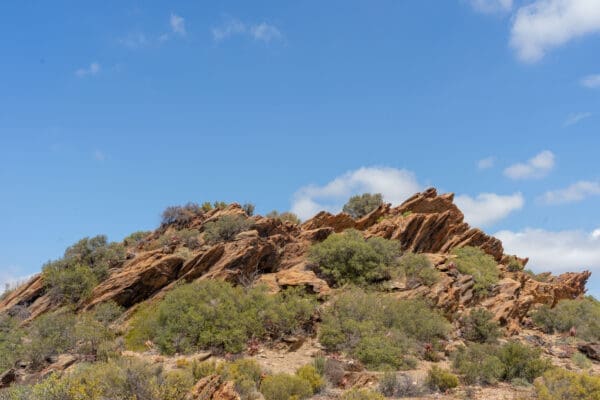

Botanical marvels
The Succulent Karoo Biome covers approximately 115 000 km2 , extending from the south-west through the north-western areas of the Western Cape and into southern Namibia. A semi-desert, the Karoo harbours approximately a third of the world’s 10,000 succulent species, of which 40% are endemic. “South Africa is a world in one country,” adds van Jaarsveld.
The rich biodiversity of this unique biome is due to the extensive range of different habitat types, where the plants are exposed to extremely hot summers, cold (in some cases frost & snow) and below-average winter rainfall. To cope with this incredibly harsh environment, the Karoo’s succulent plants have devised cunning strategies to optimise their chances of survival – the range of which are worthy of volumes of David Attenborough features.
Smaller stone plants, such as Argyroderma (baby bottoms), Conophytum (buttons) and Lithops (Living stones), for example, are camouflaged to such a degree that they are virtually indistinguishable on the quartz pebble flats. The small size of dwarf mesembs ensures their survival as they are designed for optimum water conservation and effective usage of resources. Compact, almost alpine forms enables an ability to capture the thermal energy on the substrate surface. The body of the Conophytum consist of fused leaves, which allows for the recycling of moisture from the older season’s leaf pair into the new leaf pair. The older fused leaf also serves as a protective tent under which the younger leaf pair remains until the onset of rains. The baobab-like, butterbush (Tylecodon paniculatus) has succulent stems and leaves, which can become deciduous in dry summers. To conserve energy, its stem with peeling, papery bark is photosynthetically active. Many succulents store carbon dioxide in the form of malic acid during the night, for photosynthesis during the day – while their breathing pores remain closed to conserve moisture. Rounded (globular) leaves allow plants store the maximum amount of water relative to their shape. Leaves, such as those of the succulent mesembs, are orientated towards the sun in such a way that they do not receive the full intensity of radiation. Greyish-white powdery bloom on the leaves provides protection as it reflects sunlight, such as the Cotyledon orbiculata. Conducive for germination, the Aizoaceae have developed effective seed banks held on the plants, only to be released when it rains.
Endless wondrous adaptations, but even at their most cunning, the Karoo is facing significant impacts from climate change, including increased temperatures, more frequent and severe droughts, and changes in vegetation and ecosystem dynamics – altering the Karoo’s fragile ecosystems and threatening its unique biodiversity.
The Design
With a landscape encompassing approximately a third of South Africa, portraying the Karoo in the relatively, meagre size of an RHS Chelsea show garden is no mean feat.
The team has selected six key areas, providing visitors with a mini tour of the unique landscape, where each view highlights the different character of the Karoo and champions the plants specific to that particular segment of the region.
Similar in design to ‘The Garden of the Sun’ at the Babylonstoren in South Africa, Lewis designed the RHS Chelsea garden around the Quiver Tree (shale) Mound, from which stem various biomes from the Karoo, forming the smaller beds. Quiver trees, also known as kokerbome, are a prominent feature of the arid Karoo landscape and the garden will feature approximately twelve of these beautiful specimens. Shimmering quartz beds will be dotted with small, gem-like succulents, butter bush alongside fan aloes.
“By dividing the garden into smaller sections, we were able to showcase more biomes within the larger Karoo biome, highlighting the wide diversity of the area and the plants that thrive there,” explained Cornell Beukes, Botanist at Babylonstoren, South Africa.
The garden will featuring fifteen plant families, namely: Asphodelaceae (Aloe family) ; Crassulaceae (Adromischus, Crassula, Cotyledon family) ; Euphorbiaceae (Euphorbia family); Mesembryanthemaceae (Mesemb family) ; Aizoaceae (Lithops) ; Apocynaceae (Ceropegia, Fockea, Huernia, Hoodia family) ; Amaryllidaceae (Haemanthus) ; Asparagaceae (Lachenalia) ; Asteraceae (Othonna family) ; Geraniaceae (Pelargonium family) and Didiereaceae Portulacaceae (Portulacaria family).
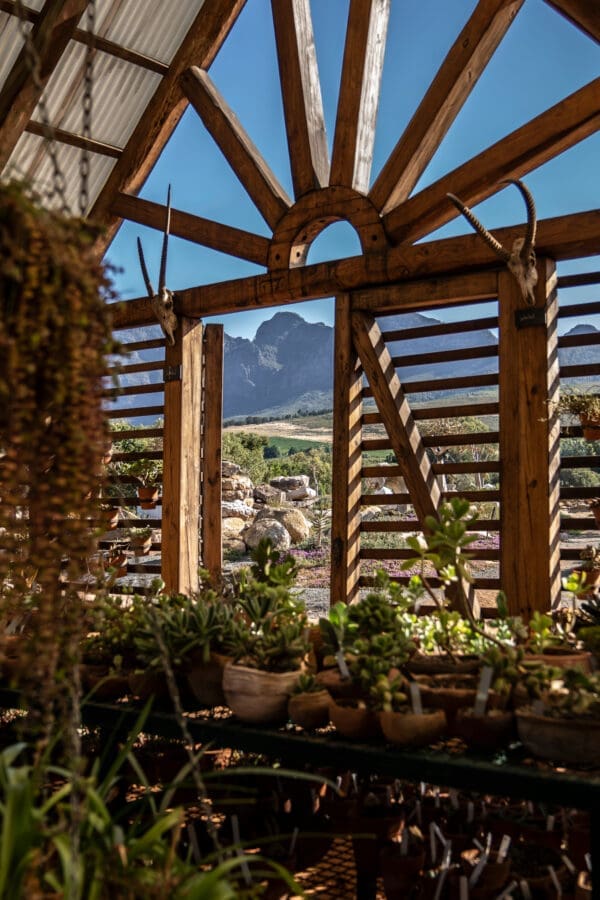
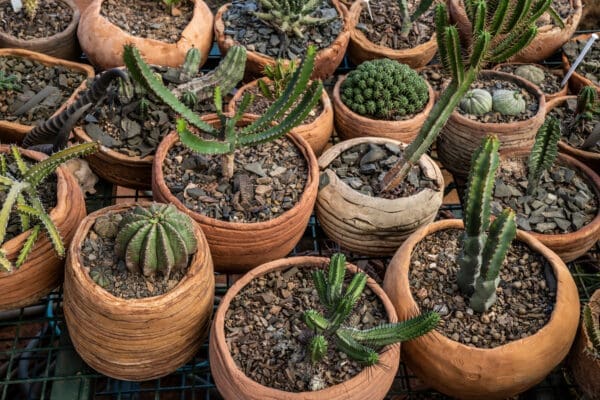
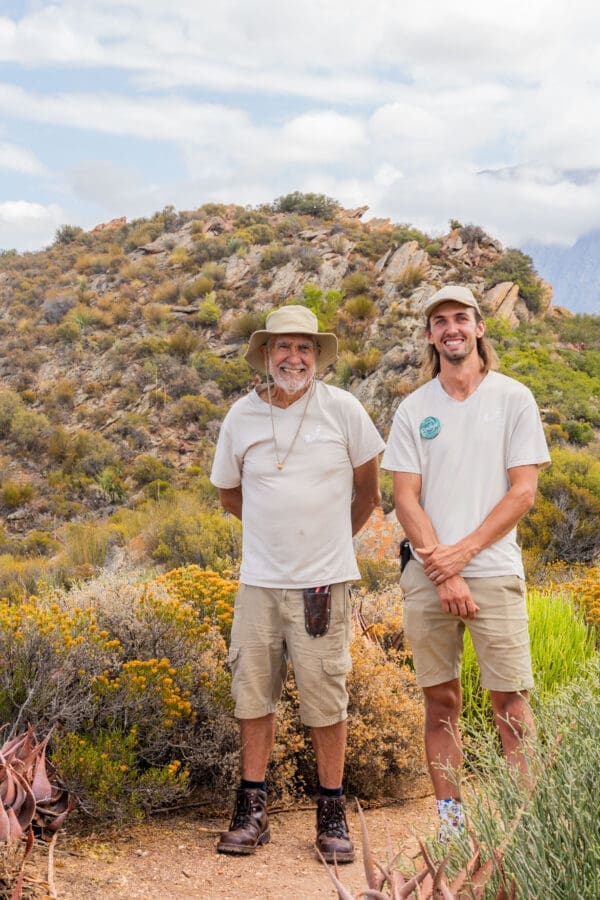

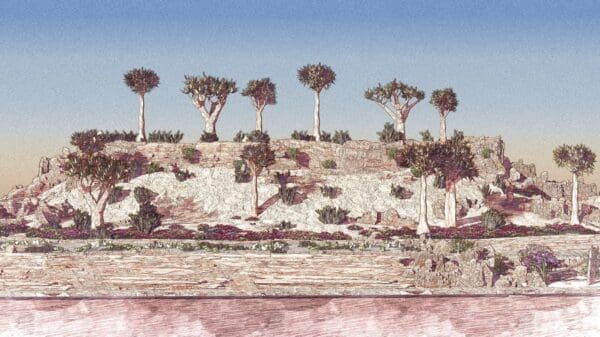
Sourcing the sheer number and diversity of succulents required to make this garden proved to be a challenge explained Lewis, but she found there to be an incredible range available in the UK, raised by British growers. “This highlights not only the growing interest in these plants but also the positive impact it has on reducing the trade of illegally sourced species. It’s reassuring to know that there’s a market supporting sustainable practices, and it speaks to the potential for growing awareness and responsible plant sourcing in the UK and South Africa,” said Lewis.
Most of the rocks for the garden were sourced in the UK, with a small quantity sent over from South Africa to showcase the different geology types.
Permanent display
After the show, the garden will be replanted at The Newt in Somerset, bringing a slice of the Karoo landscape to the West Country. The garden will become a new permanent display, with the aim to raise awareness of water-wise plants and endangered species.
“We are thrilled to be bringing elements of the RHS Chelsea garden back to The Newt, where we plan to showcase it to our members in a more permanent and exciting way. While concrete plans are still in the works, we are eager to integrate this design into the garden at The Newt for the long term, creating a beautiful and lasting feature for all to enjoy,” explained Lewis.
